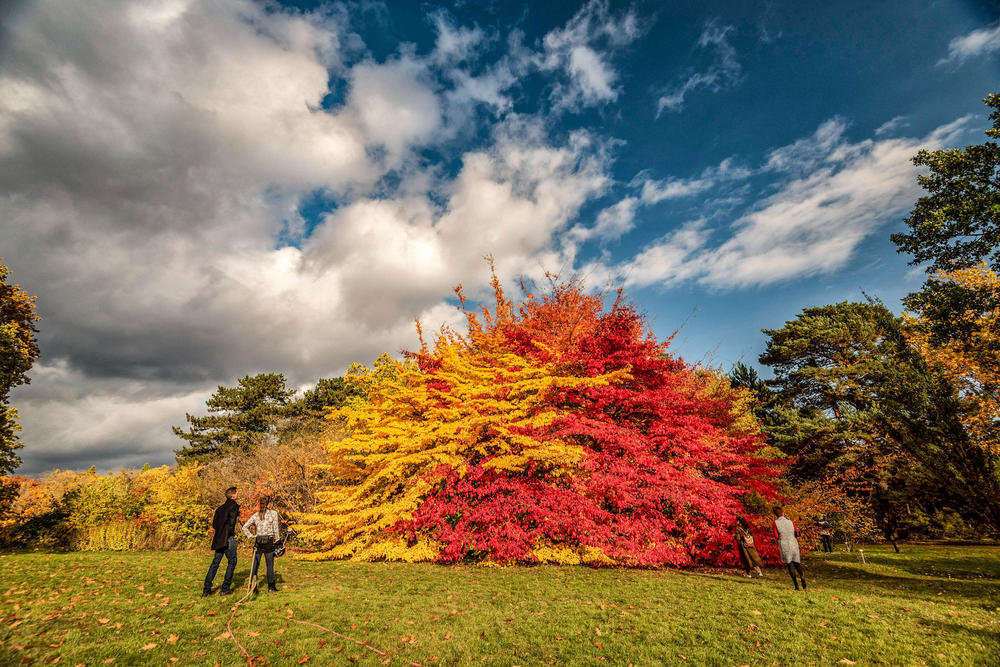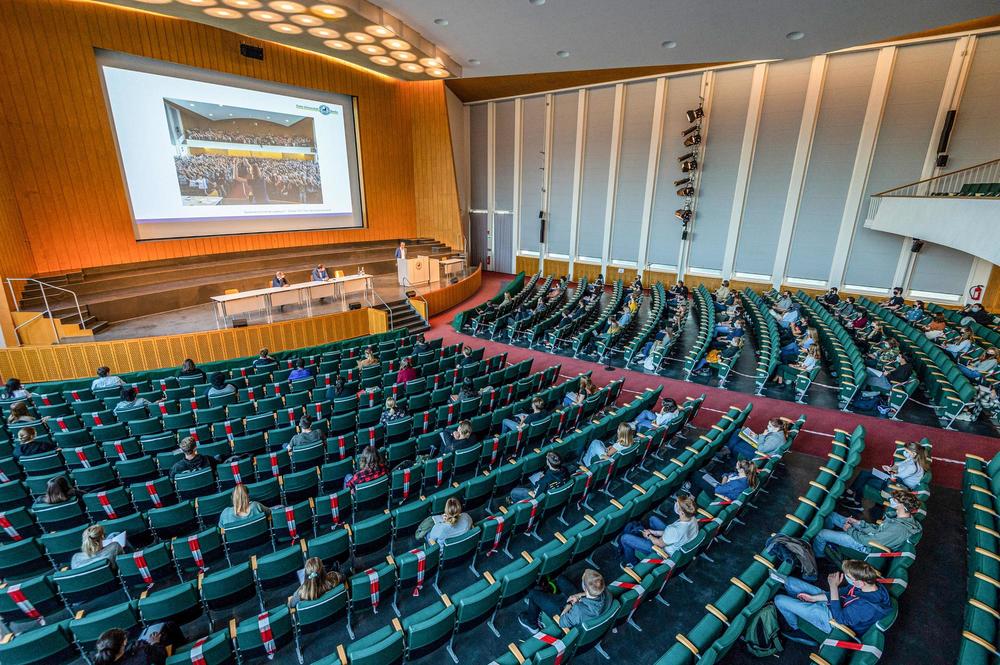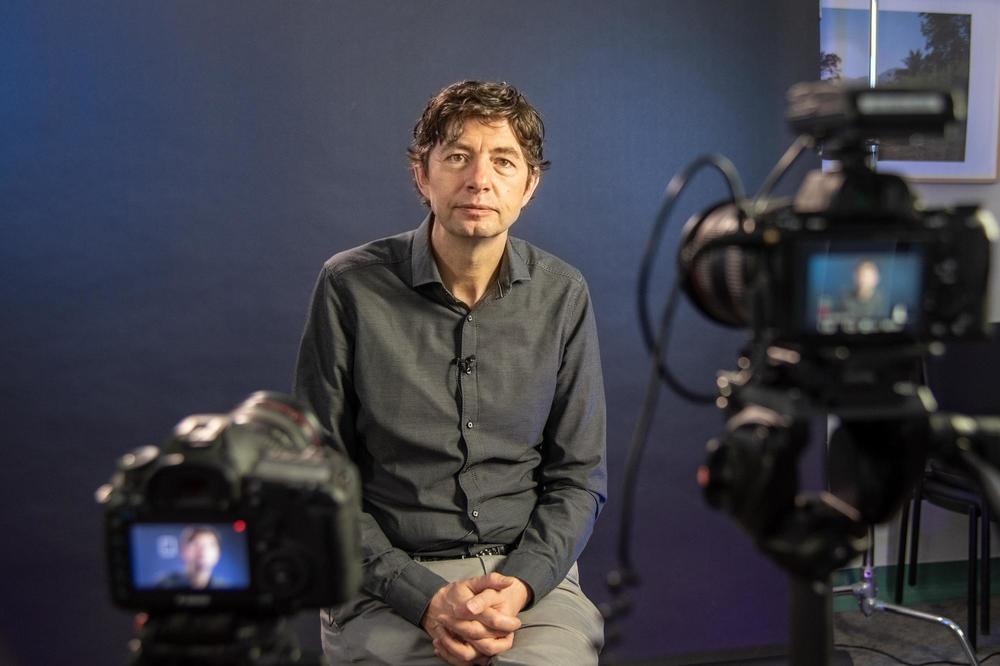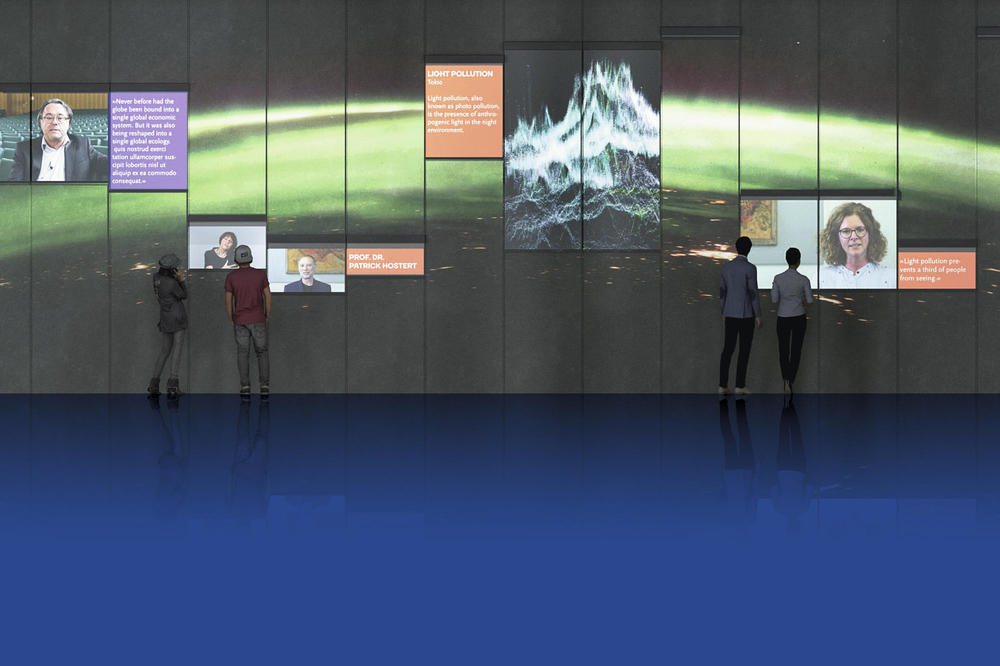Semester Highlights
Botanic Garden and Botanical Museum: A Sight for Sore Eyes/Orientation on Site, but at a Distance / Joint Research Project on the Coronavirus: Professor Drosten’s Tool Box / Digital Grand Opening of the Humboldt Laboratory: Excellence Beats Incidence
Mar 11, 2021
Botanic Garden and Botanical Museum: A Sight for Sore Eyes
Luminous reds and yellows outshine the lawn in the Botanic Garden. Even the lockdown last fall didn’t stop plants like the Persian ironwood tree – also known as the Persian parrotia – from putting on a dazzling show for visitors. After buying tickets online, plant-lovers were welcome to wander around the garden’s 43 hectares of outdoor space in November and December. But the stars of the 16 greenhouses, such as the Kigelisa africana (also known as the sausage tree) and the “Victoria” giant water lily, haven’t had visitors for months. The Botanical Museum also remains closed, but not just because of the pandemic. The building is undergoing a thorough renovation and has been redesigned to include a new visitor center at the Königin-Luise-Platz entrance. The museum shop, cash registers, and lockers will all be housed under the wooden roof of the light-flooded building. Together with a café, and a new garden connecting the center with the Botanical Museum, this will create a vibrant space for guests to meet, chat, perhaps enjoy a coffee, and learn more about the gardens and their history. The construction work should be completed by 2023. Director Thomas Borsch and his team hope that by then, visitor numbers will have returned to their pre-pandemic levels of over 450,000 annually. But it makes no difference to the parrotia; it will be just as beautiful, even if no one is there to see it.
Orientation on Site, but at a Distance
With barrier tape, masks, 100 students instead of 1,100, two out of three seats empty, the orientation events for this winter semester’s new students, like most other events of the past year, took place under conditions that have come to seem almost normal during the pandemic. The Center for Academic Advising, headed by Stefan Petri, organized three face-to-face events in October for a total of 450 newly enrolled students, while an additional 3,000 students attended digital events held in parallel. Petri and his team had been preparing for eight weeks: they developed a hygiene concept, set up an online registration system, and documented the contact details of all those present so that they could track and trace participants if anyone afterwards tested positive for Covid-19. In the end, they were lucky that the introductory event could take place at all. “For many of the new students, this was one of the few opportunities in the entire winter semester to actually visit Freie Universität,” says Petri. A few weeks later, infections skyrocketed across Germany, and the relative freedoms of summer gave way first to a “lockdown light” and eventually full lockdown. On the screen, the newly enrolled students watched last year’s event where a full auditorium did a crowd wave. The pictures recalled a strangely distant past that, from the viewpoint of 2020, looked more like a super-spreader event than the joyful start of a brand-new semester. But it also represented the hope of a post-pandemic world. “I am really looking forward to welcoming first semester students in person again on the Freie Universität campus,” says Stefan Petri. “This is always one of the highlights of the academic year for us.”
Joint Research Project on the Coronavirus: Professor Drosten’s Tool Box
Since the outbreak of the pandemic, no other scientist in Germany has been in as much demand as the Charité’s head of virology, Professor Christian Drosten. To mark Ernst Reuter Day 2020, a video was made featuring Professor Drosten, Dr. Sumati Bhatia from the Institute for Chemistry and Biochemistry at Freie Universität, and other scientists currently working on an inter-institutional research project. The project, which explores new ways of understanding the coronavirus, brings together partners from Freie Universität, Humboldt Universität zu Berlin, Technische Universität, Charité – Universitätsmedizin Berlin, and non-university research institutions such as the Robert Koch Institute and the Leibniz-Forschungsinstitut für Molekulare Pharmakologie in 18 working groups. Among other topics, the researchers investigate how the virus spreads, what effects mutations have, and how the virus can be destroyed. A key component of their research toolkit is an artificial human lung created using a 3D printer, while the Charité provides “molecular tools” such as “weakened viruses, reporter viruses, and pseudotypes,” explains Drosten. The researchers are also able to work with real, complete coronaviruses in a safety laboratory. Professor Drosten praises the accumulated scientific and political expertise in Berlin that makes top-class research projects possible: “Research that is undertaken in Berlin quickly becomes relevant to wider society.” The Berlin University Alliance (BUA) is funding the project with 1.8 million euros. When the three Berlin universities established the BUA together with the Charité, one of the fundamental ideas was that the participating scientists should devote themselves to the “grand challenges” of our time. Pandemics, as we now know, certainly count as a grand challenge.
Digital Grand Opening of the Humboldt Laboratory: Excellence Beats Incidence
The word “cluster” has become familiar over the last year in its epidemiological sense of a local accumulation of infections. But it has some more pleasant associations too, especially for universities, where it’s come to be best known in the context of the “Clusters of Excellence” established to bundle cutting-edge research within an alliance. At the beginning of the year, the Clusters of Excellence at Freie Universität, Humboldt-Universität zu Berlin, Technische Universität and Charité had originally planned to present various research projects in the newly opened Humboldt Laboratory in the Humboldt Forum. Four of the projects involved Freie Universität. However, to avoid creating a Covid-19 cluster, the presentations have had to be moved online. The social sciences and humanities cluster “Scripts” took statements and ideas about current global discourses on liberalism and projected them onto a 25-meter long, five-meter high multimedia installation made of mobile roller blinds. The work creates a dynamic spectacle that constantly overwrites itself. The literary cluster “Temporal Communities” has composed audio pieces for the project “Zugetextet” (a colloquial expression meaning literally “overtexted” or, metaphorically, “talked to death”). Each piece concerns one of 16 objects that are displayed in cabinets hanging from the ceiling, including a children’s Bible from Colonia Dignidad and an anatomical specimen of Friedrich Ebert’s appendix. A “research station,” consisting of a three-dimensional grid structure with attached computer monitors, represents brain research; it belongs to the “NeuroCure” cluster based at Charité – Universitätsmedizin Berlin, the joint medical faculty of Freie Universität and Humboldt-Universität. Finally, the fourth cluster, “MATH +,” a joint research project in applied mathematics supported by the three Berlin universities and two non-university institutes, produced a video presenting its research on complex systems from molecular structures to transport systems. Hopefully there will still be plenty of opportunities to visit the lab on site, as the exhibition will run for three years.




